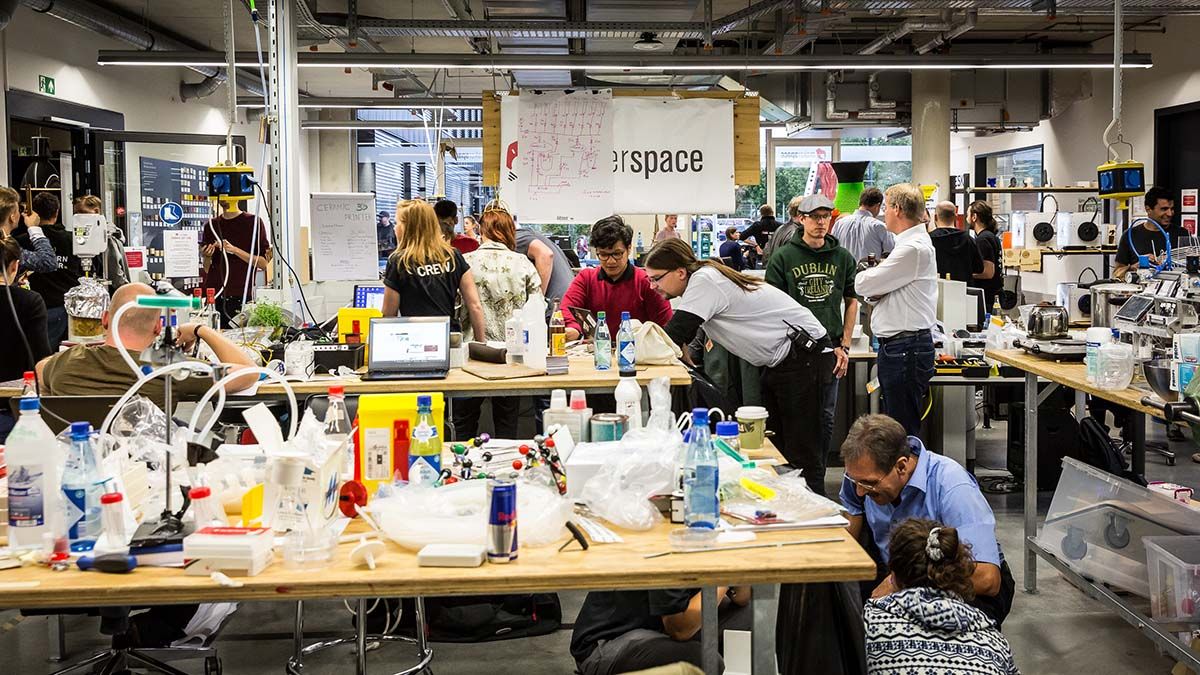- Startseite -
- Digital Bavaria -
- Blog #bytevaria - A close look at Bavaria’s economy: Lower Franconia
A close look at Bavaria’s economy: Lower Franconia
Bavaria’s economy is shaped in the regions. And because no two are the same, we’re taking a closer look at them – from Lower Franconia to Swabia: what makes the Bavarian economy special? We find out. In this part of our series, we are taking a look at Lower Franconia, a modern service and industrial centre in Bavaria.

Economic centres of success
Probably the most famous export from Lower Franconia is Dirk Nowitzki, who has already been playing in the North American pro basketball league for 20 years. But the Bavarian administrative district also achieves quite a bit in its economic power. Many of the administrative cities are valuable centres of success for the district. There are already a number of big players congregating in Aschaffenburg, including Linde Material Handling, DPD, Takata and SAF-Holland. And as if that were not enough, Schweinfurt, the “port city on the Main”, is also showing signs of a promising ecosystem with successful major industrial companies. A few examples of these companies are Bosch Rexroth, Fresenius Medical Care and ZF. The branch of the automotive supplier Schaeffler based there is larger than the actual main plant in Herzogenaurach. This trio of successful cities is completed by the service and retail centre of Würzburg. Companies like Brose Fahrzeugteile, the Duttenhofer Group, NKM Noell Special Cranes and Mero are based there.
Focus on education & research
In order to not rest on the laurels of its success so far, Lower Franconia is also focusing on an ideally developed education and research infrastructure. One good example is the technical centre at the Fraunhofer Institute for Silicate Research ISC in Würzburg, which was already opened in November 1952. Today, roughly 400 scientists work at the Lower Franconian main building as well as at sites in Bronnback, Bayreuth, Alzenau and Hanau. Collaborations with the University of Würzburg also recently illustrated the skilful combination of research and education. For one, in the field of medical research with the “Prototypical material development for stem cell applications in bioreactors” research project, secondly in the “Regenerative technologies for oncology” project group. These make it clear that Würzburg has already positioned itself as one of the most important Bavarian Life Sciences locations.
Practised digitalisation
The economic location of Lower Franconia also presents how progress can succeed thanks to digitalisation for all companies. The solution is the combination of successful SMEs with an ultramodern research landscape. The district is also working on gradually integrating digitalisation into everyday life. Students at the Johann-Schöner-Gymnasium in Karlstadt are already benefiting from the raising of awareness for digitalisation with the “Digital Media Lab”. The Zentrum für digitale Innovationen (ZDI) Mainfranken in Würzburg is also actively working on a future for those interested in start-ups. The support focuses on the start-up preparation phase and also includes awareness raising measures, for students though. Another important project is the digitalisation of trade in cooperation with the Würzburg and Augsburg Chambers of Trades and Crafts. The unique research project will show how digitalisation can be implemented in trades over the next three years. Würzburg Chamber of Trades and Crafts is supporting the project with the focus of to what extent the topic of robotics can be used sensibly in trades.
By the way, in comparison with all the Bavarian administrative districts, Lower Franconia comes up trumps with the lowest unemployment rate. So all the indicators are pointing towards a successful future. Do you want to find out more about Lower Franconia and its regional specifics? We will be happy to provide you with more information about the administrative district.

- von Jutta Stohwasser
- Investor Services Energy Technology | Funding and financing options
- Alle Artikel dieses Autors anzeigen

2021年スタートアップへの投資(2):デカコーン1社、ユニコーン6社など、バイエルン州のスタートアップに多額の投資

モビリティの未来のための実験場-バイエルン州

